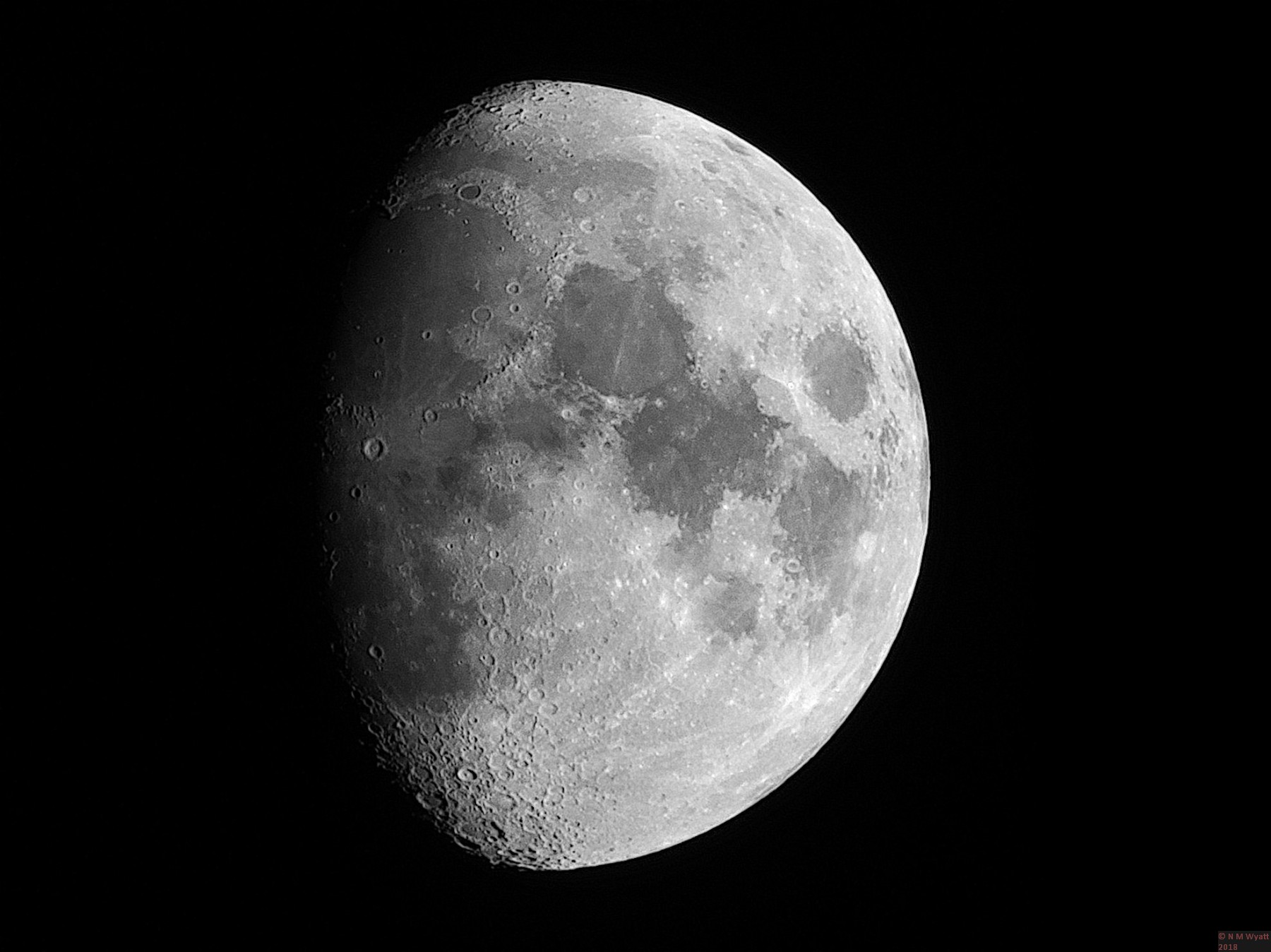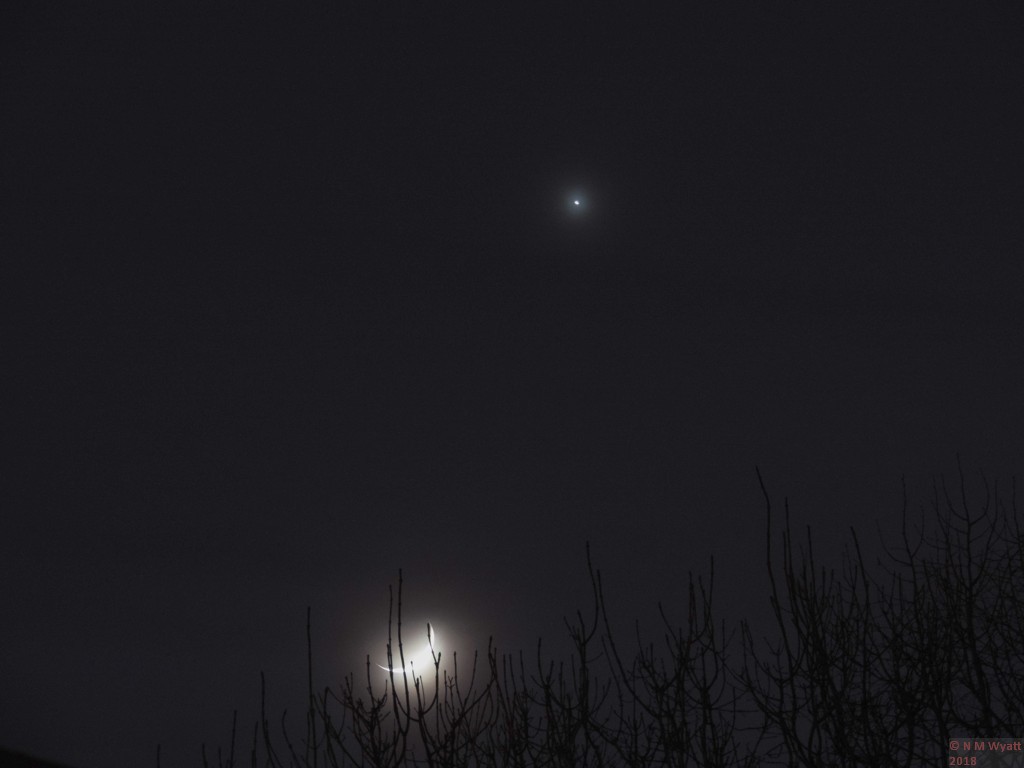If you find this website useful, please check out my books or visit my Amazon Author page. Or even Buy Me a Coffee!
Astronomy
Astrophotography
You are never too old to learn, and one of the thing that has opened my eyes has been discovering the quality of astronomical images that can be produced by amateurs with very modest equipment. By using digital cameras and image processing software it's a realistic ambition to produce images that compare favourably with those produced by the world's biggest telescopes fifty years ago - right in your back yard!
This website does not showcase the best astronomical pictures on the internet! It's a selection of pictures I have taken myself with basic equipment and free software. Producing images like these below, or even better ones, is within your reach!
Most importantly, you don't have to spend a fortune. My first serious scope, mount and tripod cost £180 on Ebay. I spent £40 on a more solid tripod, and about £200 on various bits and pieces including books and an ancient Canon EOS DSLR and a seconhand Microsoft HD Webcam. The results shown before are some of my best so far, and will be updated from time to time.
Perhaps the easiest target in the sky is the moon. You can get good pictures with any long or zoom lens, this is a 'stack' of six pictures taken with an ordinary bridge camera:
A gibbous moon photographed on the isle of Skye.
Follow the links below for introductions to some of the other things you can image in the night sky:
A Conjunction of Moon and Venus
One of the requirements for most astrophotography is a mount that can follow the rotation of the heavens - without this, all your stars will be little (or even long) streaks unless you are using a wide angle camera lens. It obviously follows that your mount needs to be capable of doing this with a reasonable standard of accuracy.
If you visit an astronomy forum and ask for advice on equipment for imaging, you will probably be told that you can just get by with an EQ5 mount or ideally an HEQ5 or EQ6 mount.
Now this is not welcome advice for a beginner as the prices of these mounts are not insignificant, and they often ask if the much cheaper EQ3 mount can be used for imaging instead (there is no EQ4 available). The answer will almost certainly be that the EQ3 is OK for cameras used with relatively short lenses or short exposures on bright objects with light telescopes.
This is NOT true. Most of the people giving this advice have larger, heavier duty telescopes and are used to taking long exposures through narrowband filters. If they have any experience of an EQ3 mount they will remember it as rather smaller and very wobbly.
Now there's the rub ... the EQ3 tripod is very wobbly, but the mount itself is capable of imaging deep space objects very well, at least well enough to keep a beginner happy over their first few seasons. So if you can't afford a more expensive mount or already have an EQ3 tripod all is not lost. You have two cheap options: either stiffen up the EQ3 tripod or replace it with an EQ5 tripod. Stiffening the tripod may set you back a tenner for some M6 studding and wingnuts and an EQ5 tripod will sell for about £50 second hand or around £90-100 new.
Let's look at the cheap solution:
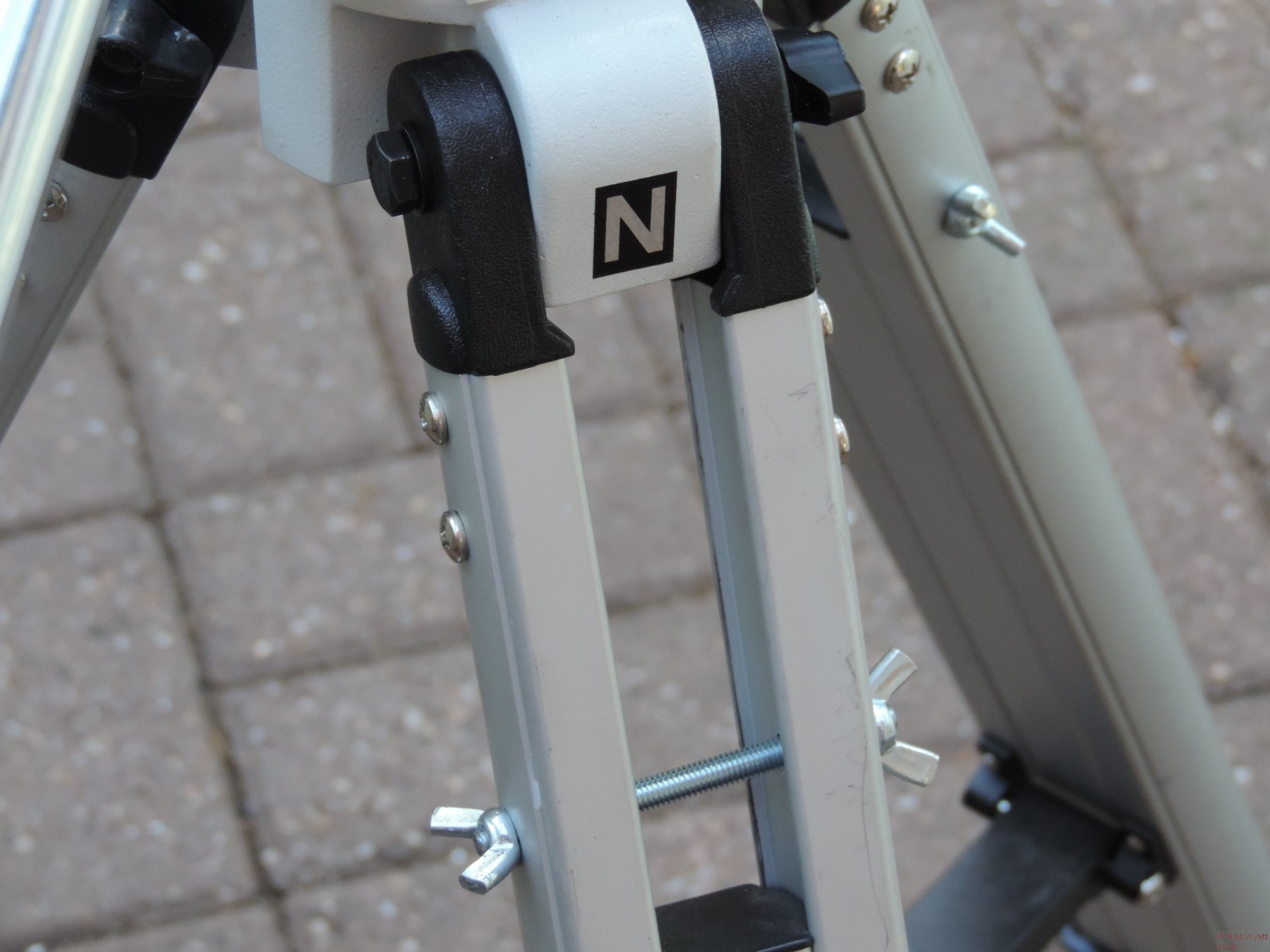
There you go! It does mean drilling holes in the tripod, but it will make it a vastly more rigid by preventing the bottom parts of the legs flapping about. Naturally you have to make sure you have all the other screws done up securely (not over tightened!) Also, keep the tripod as low as you can, it will be much more rigid, the extension shown in the photos is about right.
If you can get an EQ5 tripod, then the EQ3 mount should drop straight on:
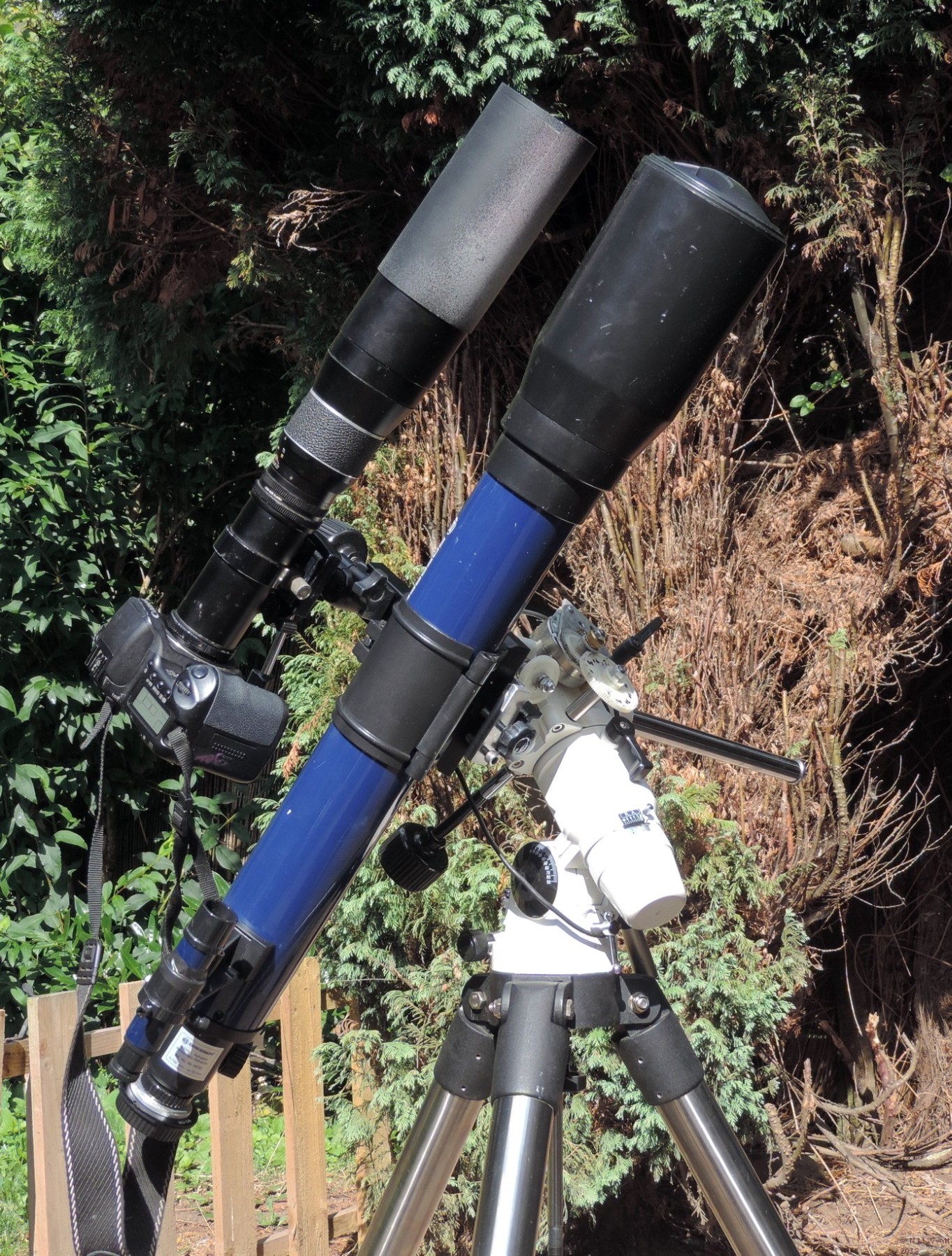
All those gears are my home-made RA drive, the thing that makes the scope follow the stars around the sky -you will need to buy one of these if you don't have a goto version of the EQ3 mount. A single axis motor for EQ3 will set you back about £70. I also recommend a polarscope to simplify and speed up polar alignment, about £33 but this is not essential as you can 'drift align'.
Ok, now you are thinking this is up to £200 of extra kit! Why not buy a fully-loaded HEQ5?
Good point - If you are buying new from scratch, get the best mount and tripod you can afford, but if you are skint or like me you start off with a second hand scope that comes with an EQ3-2 mount and tripod attached, this is a way to get started for less.
So, if you already have an EQ3 tripod and mount you only need the studding and motor to get started. If you have an EQ3 pro-synscan goto scope - in which case you just need to stiffen or replace the tripod.
But I've made a bold claim - that the EQ3 mount is up to deep-space astrophotography. Well all the astrophotos on this website to date were taken with my NEQ3 mount (just one flavour of EQ3). The mount has not been modified internally or even disassembled and regreased, all I have done is put teflon grease on the wormwheels and take a reasonable amount of care to get a good balance between backlash and freedom of movement of the RA and DEC adjustments. I should say that 'good balance' is more in favour of free movement than backlash as you can balance the mount 'east side heavy' to eliminate the effects of backlash in RA.
Here's an image of the North America Nebula taken using a 130P-DS reflector with coma corrector on the EQ3 mount. This is a stack of the best 90% of 60 one-minute long exposures:
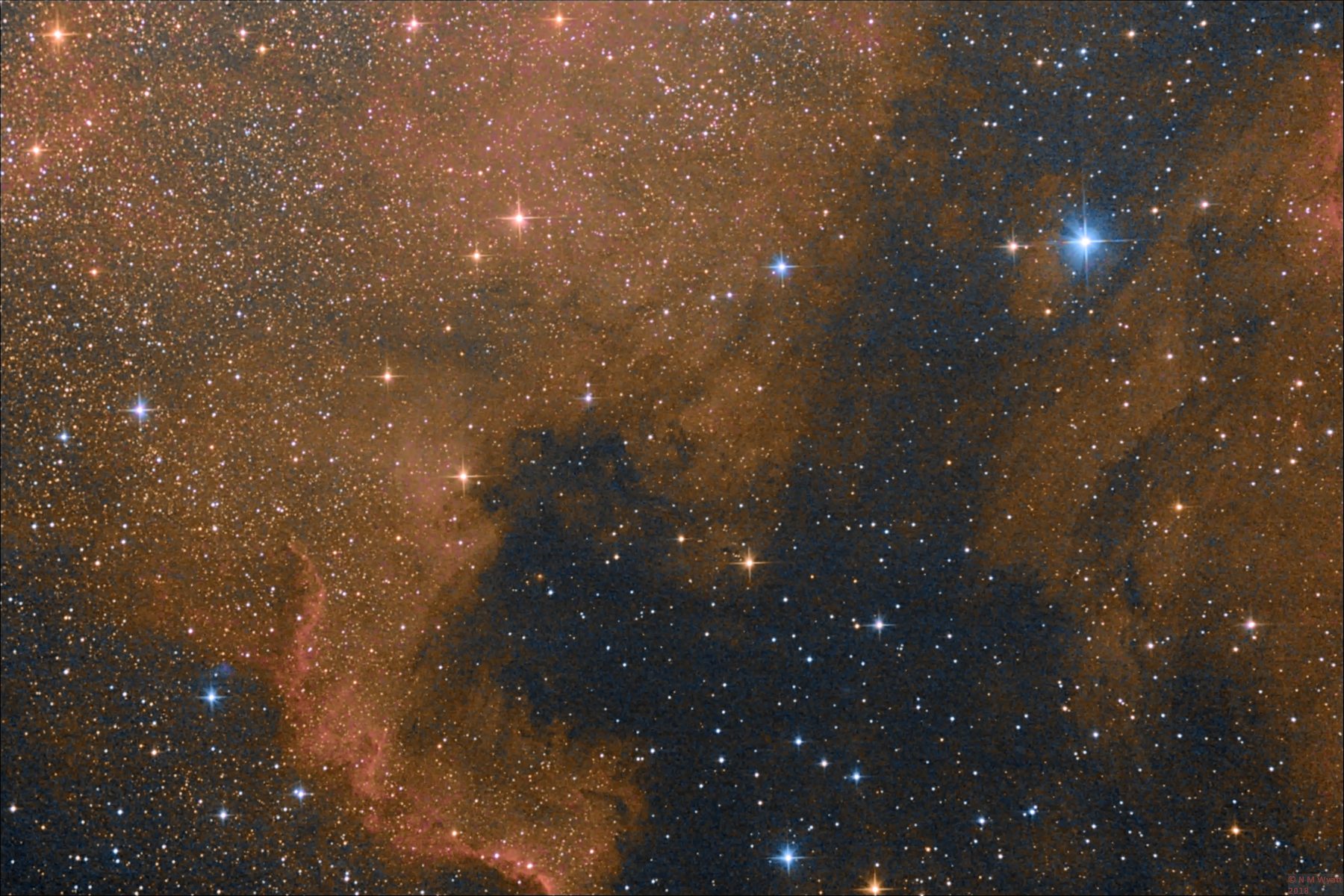
Finally, many people will say the EQ3 is only up to imaging using camera lenses as telescopes are too heavy for it. The 150PL reflector weighs about three times as much as the 130P-DS and has over twice the focal length, making it it far more pernickity about the quality of tracking. This image is from the 53 best of 60 one-minute exposures. I'll leave it to you to decide if whether or not you can photograph deep space objects with an EQ3 mount.
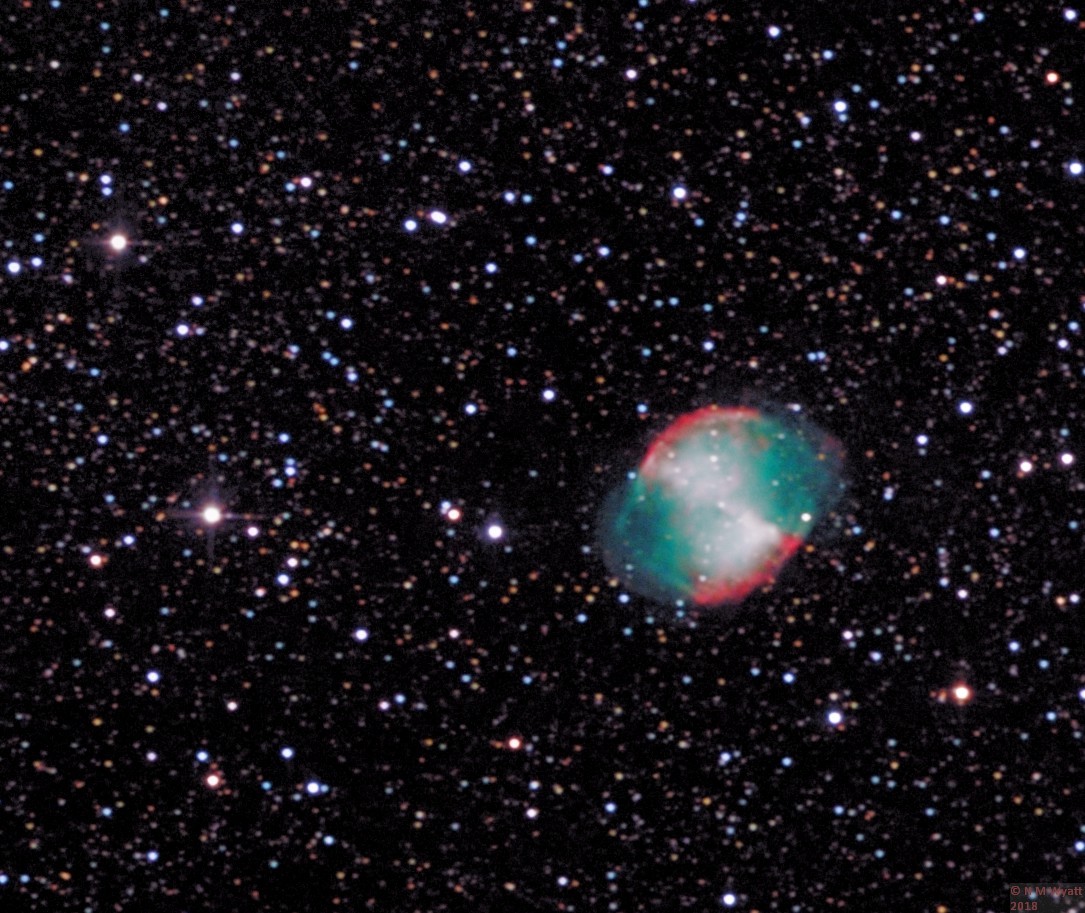
- Details
- Category: Astrophotography
M51 is a spectacular face-on spiral galaxy. It was the first 'spiral; nebula' to be identified by Lord Rosse. It has been disturbed by the nearby, but smaller, NGC5194 - the two are connected by a steramer of stars, dust and gas. I'm pleased with this image because it was taken in June, when it wasn't even getting fully dark. I hope to get more subs on darkler nights to add more detail and tease out the outer reaches of the nebula.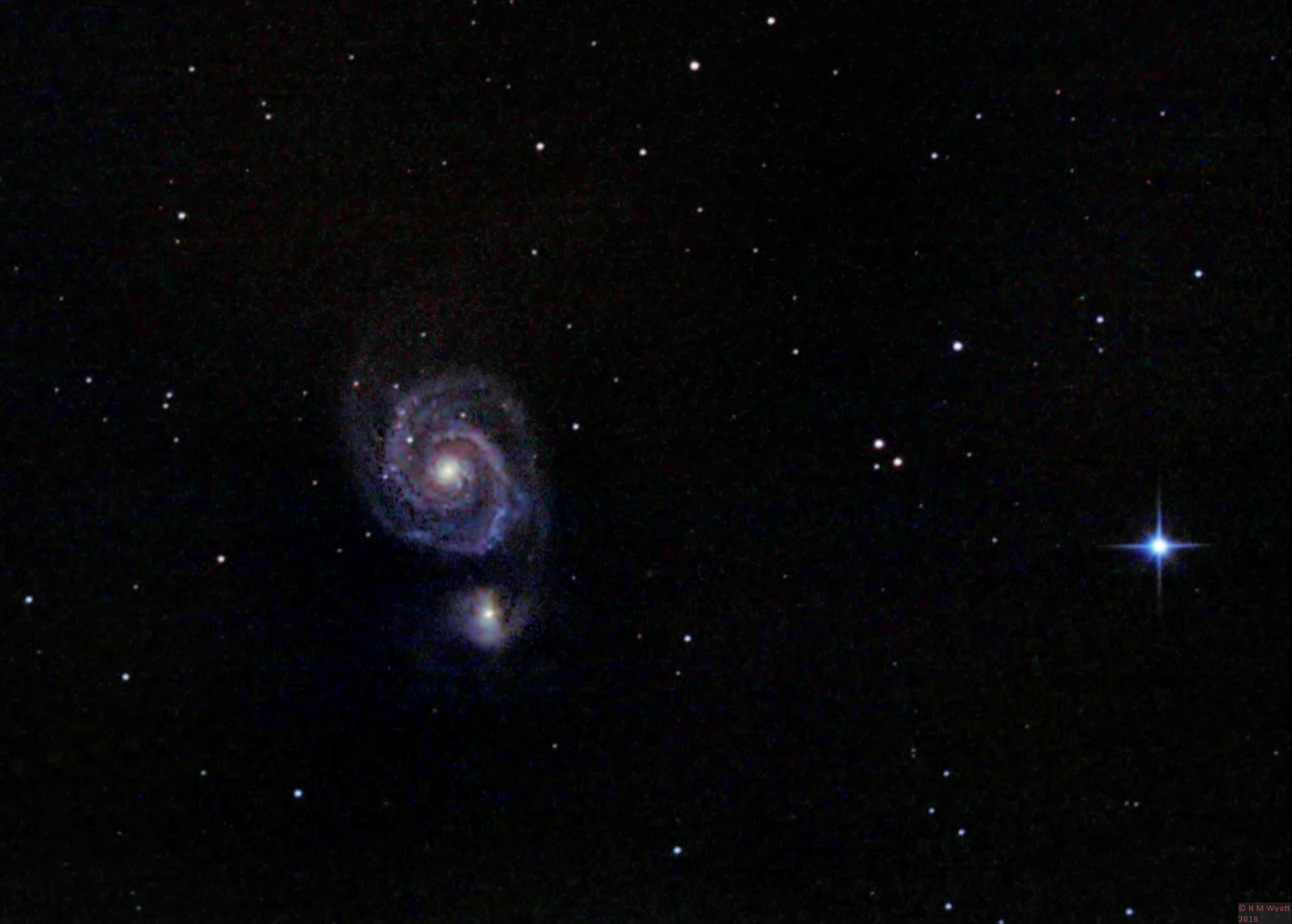 M51 the Whirlpool Galaxy and nearby NGC5195.
M51 the Whirlpool Galaxy and nearby NGC5195.
- Details
- Category: Astrophotography
On the 9 May 2016 Mercury passed directly between the Sun and Earth. With the use of a special filter I was able to have some excellent views of the event and capture some nice images. There are two groups of sunspots near the centre of the disc, one much more obvious, as well as the crisp round disc of Mercury in this picture taken about a fifth of the way into the transit.
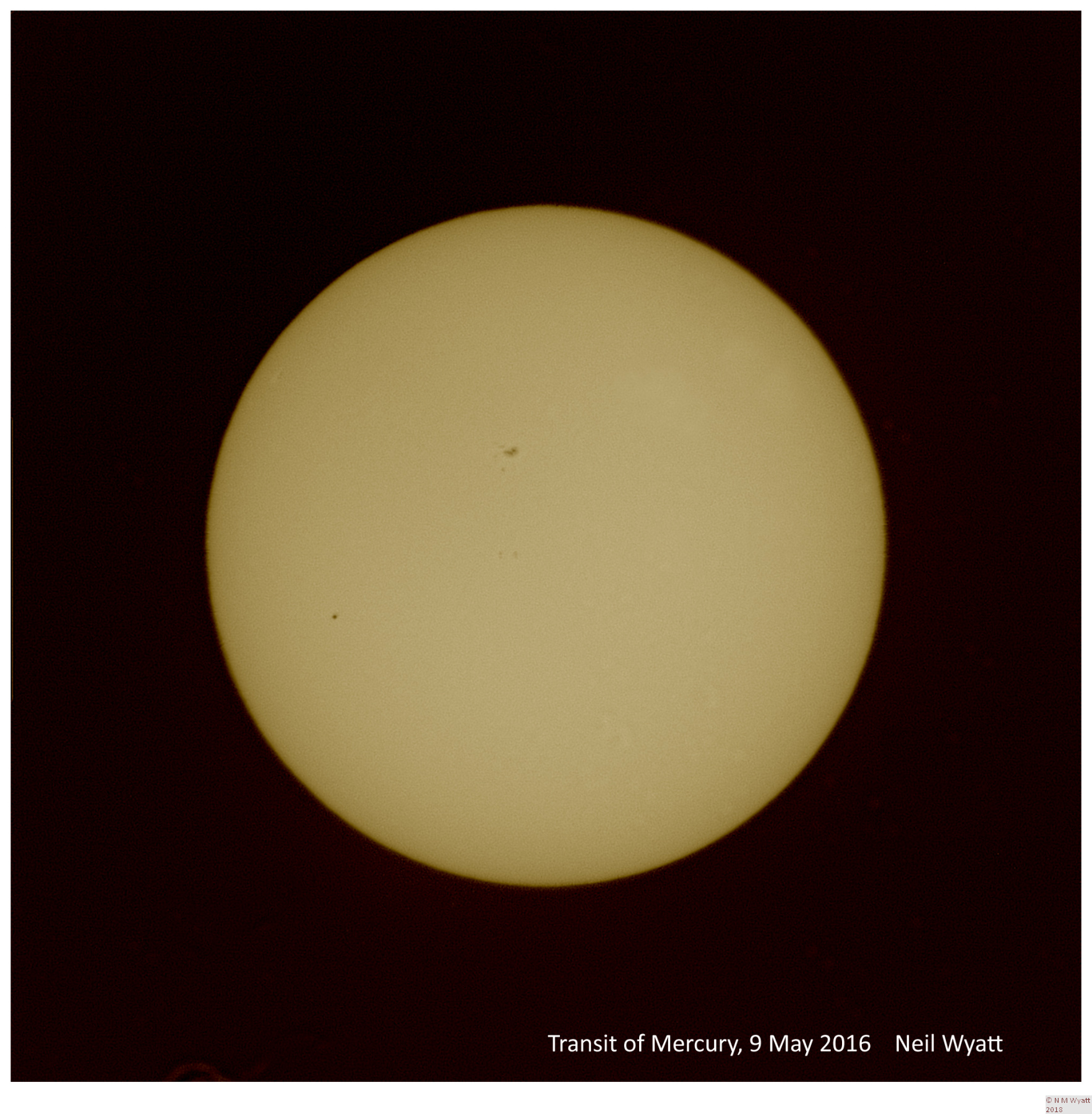
This animated image shows the first few minutes of the transit. First contact is just before the planet becomes visible, second contact is when it fully enters the sun's disc. The exact times depend on the type of equipment used as the sun appears larger when imaged in some narrow bands of light. The stretching and shifting of the image is caused by atmospheric turbulence. The earlier image is sharper because it is a stack of several images that average out this distortion.
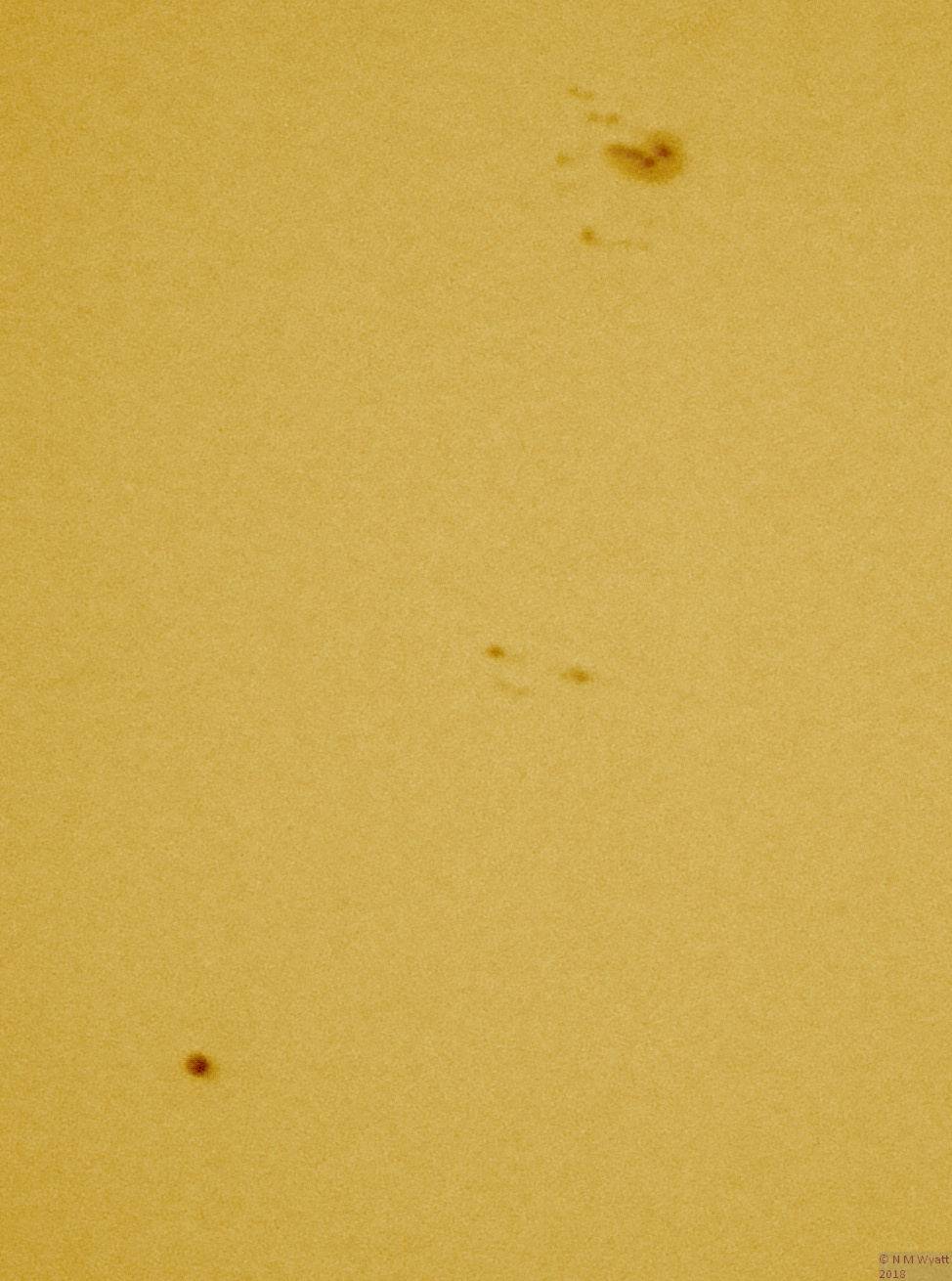
The second photo is from near the middle of the transit, when Mercury appeared closer to the two sunspot groups. remeber, although it looks like it is on the surface, Mercury's orbit takes it between abjust over half to about 2/3rds of the way from earth to the Sun.
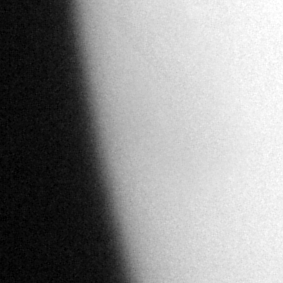
This is the equipment I used, nothing particularly expenxsive, but note the silver Baader solar film filter, just visible inside the end of the telescope. this reduces the sun's glare by about 99.99% Remember, looking at the sun without proper equipment will cause eye damage and even blindness.
It's even dangerous to use a small finder scope on the sun, so instead I made this special solar finder that uses a pinhole to project an image onto a small screen.
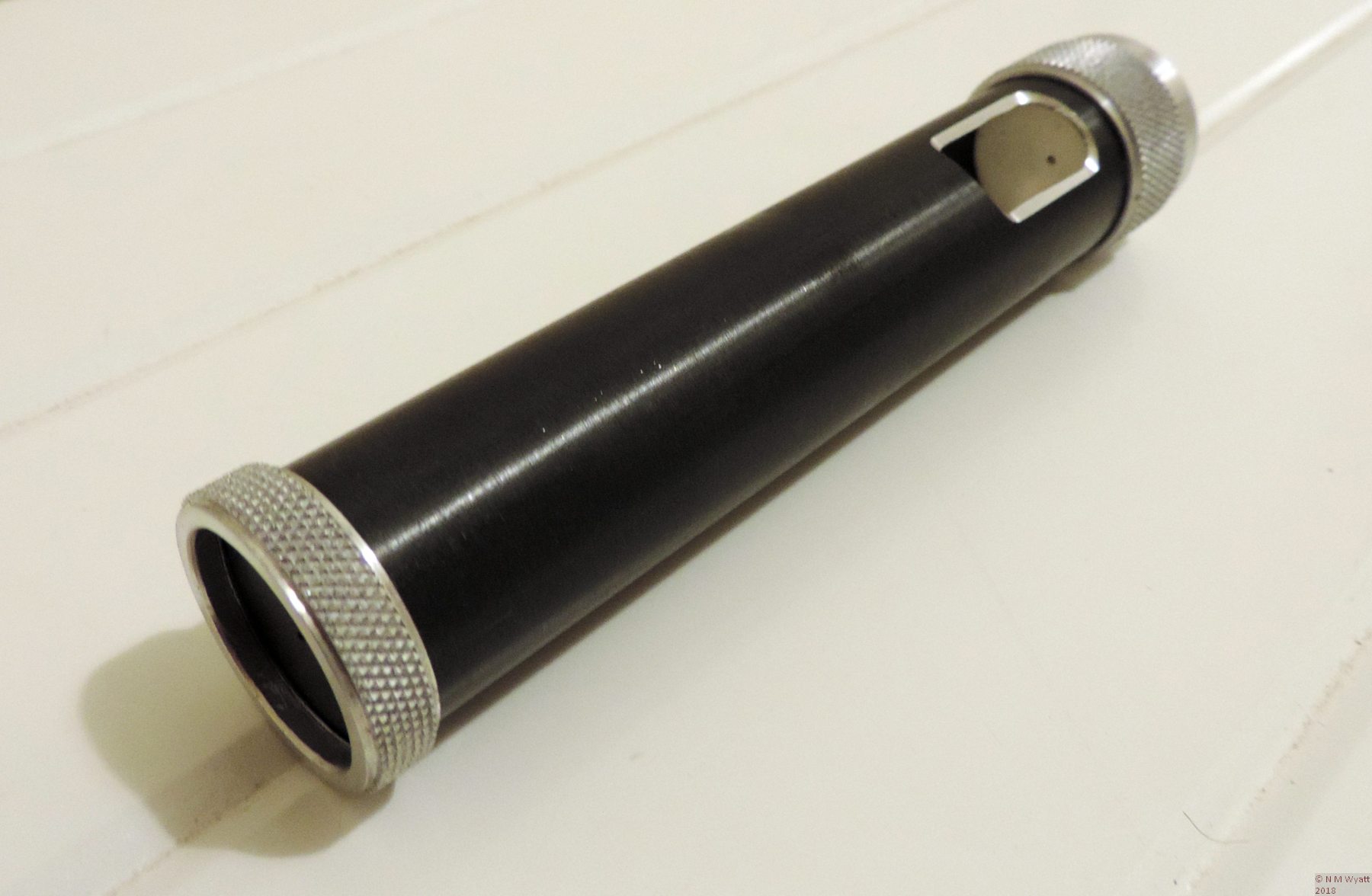
- Details
- Category: Astrophotography
Dr Jason Dale's PolarFinder is a great utility to help with polar alignment using a polar scope.
You can download it here.
One minor problem is that recently polarscopes are being supplied with a new, much more finely engraved reticle. This allows more accurate alignment, but 'translating' from Polarfinder to the new system can be confusing as it has 72 divisions instead of 24!
The fix is to download the new reticule file below:
Open your existing PolarFinder folder and rename the existing 'reticle.bmp' as 'reticle.bak', then copy the new 'reticle.bmp' file into the polar finder folder.
It should then work as before, but with the new display.
Happy polar-finding!
A screenshot of the new PolarFinder reticle:
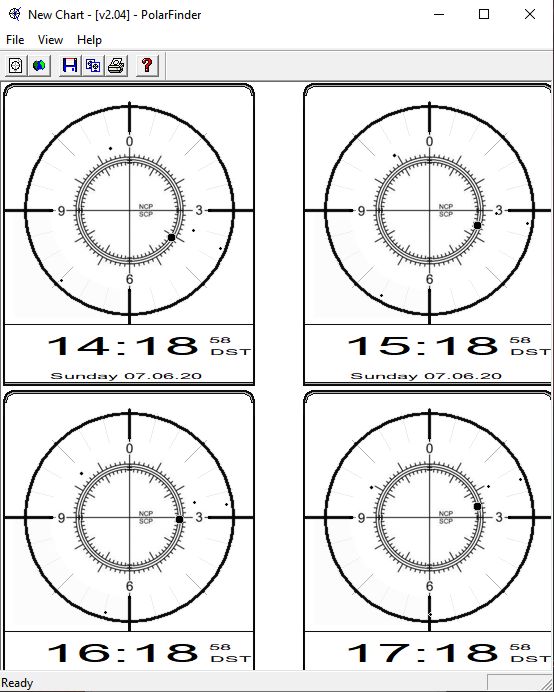
- Details
- Category: Astrophotography
M104 is known as the sombrero galaxy due to its visual appearance in telescopes. It has a very clearly marked dark dust lane around the galaxy. It lies in the consetllation Virgo, but is not part of the Virgo cluster.
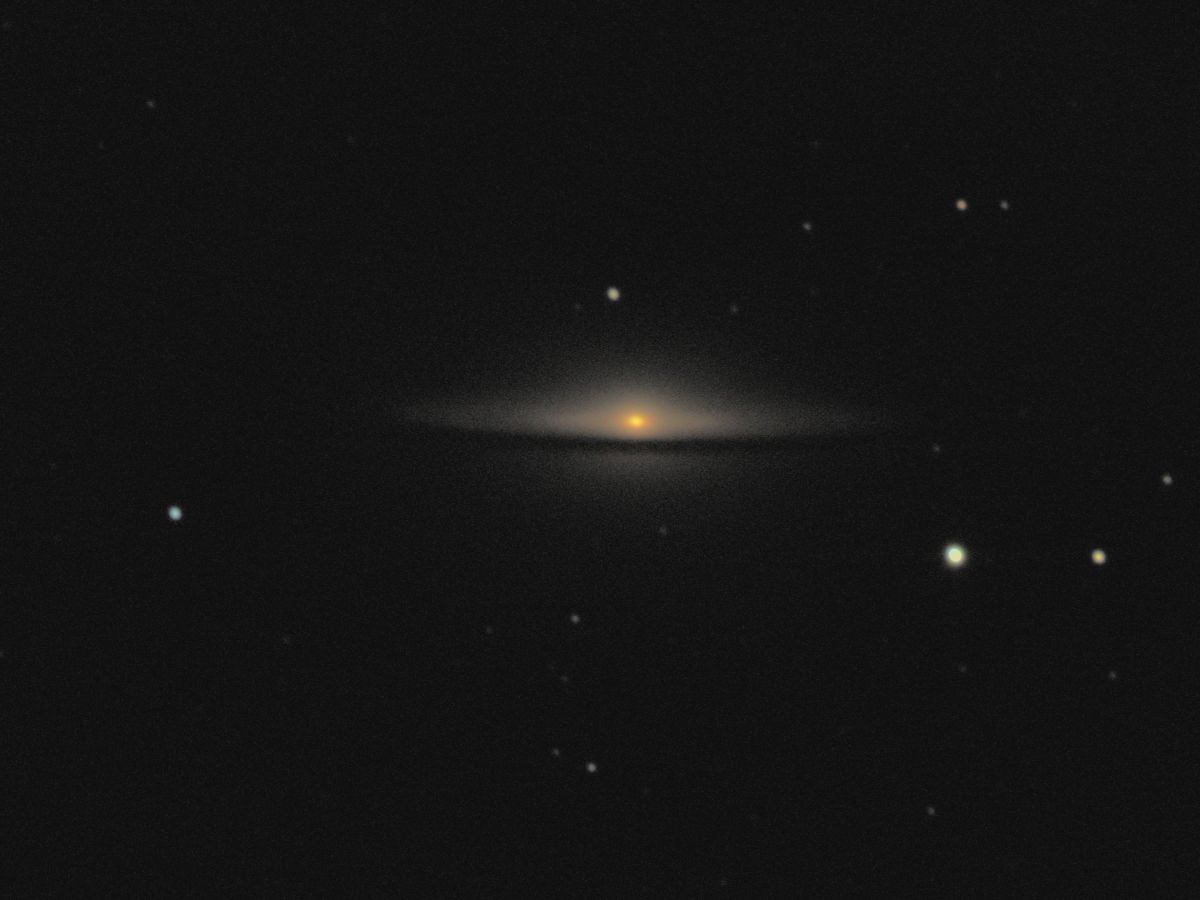
M104, known as the Sombrero Galaxy, lies in the constellation Virgo.
- Details
- Category: Astrophotography
Page 13 of 23

